|
|
Creator | Title | Description | Subject | Date |
| 51 |
 |
Hawkes, Kristen | Hunting and nuclear families: some lessons from the Hadza about men's work | Hadza hunter-gatherers display economic and social features usually assumed to indicate the dependence of wives and children on provisioning husbands and fathers. The wives and children of better Hadza hunters have been found to be better-nourished, consistent with the assumption that men hunt to pr... | Subsistence economy; Tindiga, African people; Subsistence hunting | 2001-10-24 |
| 52 |
 |
Hawkes, Kristen | Hunting and the evolution of egalitarian societies: lessons from the Hadza | Political hierarchies are common in human societies but absent among many mobile hunter-gatherers. So egalitarian social organizations have been attributed to limits that foraging imposes on wealth accumulation. But male-dominance hierarchies characterize all the great apes, our nearest relatives. ... | | 2000 |
| 53 |
 |
McElreath, Richard | In search of homo economicus: behavioral experiments in 15 small scale societies | Recent investigations have uncovered large, consistent deviations from the predictions of the textbook representation of Homo economicus One problem appears to lie in economists' canonical assumption that individuals are entirely self-interested: in addition to their own material payoffs, many exper... | Economic behavior; Self-interest; Fairness; Reciprocity | 2001 |
| 54 |
 |
Codding, Brian F. | Interpreting abundance indices: some zooarchaeological implications of Martu foraging | Indices of taxonomic abundance are commonly used by zooarchaeologists to examine resource inten sification, overexploitation and gender divisions in foraging labor. The original formulation of abundance indices developed a clear interpretive framework by linking the measure with foraging models from... | Human behavioral ecology; Zooarchaeology; Ethnoarchaeology; Resource intensification; Gender division of labor; Western Australia | 2010-07-20 |
| 55 |
 |
O'Rourke, Dennis H. | Introduction: origins and settlement of the indigenous populations of the Aleutian Archipelago | The series of papers in this special issue of Human Biology use an interdisciplinary approach to address regional questions and to integrate disparate Aleutian data into a broad, synthetic effort. The contributors leverage decades of data on Aleut origins, biogeography, and behavior through integrat... | | 2010 |
| 56 |
 |
Rogers, Alan R. | Is migration kin structured? | We estimate the strength of kin-structured migration in six human populations (five from New Guinea and one from Finland) and in one population of nonhuman primates. We also test the hypothesis that migration is not kin structured by generating a sampling distribution of the estimator under the null... | | 1994 |
| 57 |
 |
Harpending, Henry C. | J. P. Rushtons theory of ethnic nepotism | Unreciprocated aid among co-ethnics and the emotional intensity of ethnic conflict have long been explanatory challenges to evolutionary science. J. P. Rushton's theory of assortative ethnic affiliation-altruism, mating and friendship directed towards fellow ethnics-derives from his more general the... | | 2012-01-01 |
| 58 |
 |
Loeb, Laurence D. | Laurence Loeb slides | | | |
| 59 |
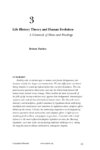 |
Hawkes, Kristen | Life history theory and human evolution : a chronicle of ideas and findings | Fertility ends at similar ages in women and female chimpanzees, but humans usually live longer and mature later. We also differ from our closest living relatives in weaning infants before they can feed themselves. The comparisons pose questions about when and why the distinctively human life history... | | 2006-01-01 |
| 60 |
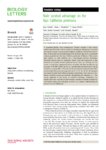 |
Macfarlan, Shane | Male Survival Advantage on the Baja California Peninsula | A consistent finding from contemporary Western societies is that women outlive men. However, what is unclear is whether sex differences in survival are constant across varying socio-ecological conditions. We test the universality of the female survival advantage with mortality data from a nineteenth... | ecology; health and disease and epidemiology; behaviour | 2020 |
| 61 |
 |
Rogers, Alan R. | Migration and genetic drift in human populations | In humans and many other species, mortality is concentrated early in the life cycle, and is low during the ages of dispersal and reproduction. Yet precisely the opposite is assumed by classical population-genetics models of migration and genetic drift. We introduce a model in which population regul... | Frequencies; Variance; Dynamics | 1986 |
| 62 |
 |
Rogers, Alan R.; Harpending, Henry C. | Mismatch distributions of mtDNA reveal recent human population expansions | Although many genetic studies of human evolution have tried to make distinctions between the replacement and the multiregional evolution hypotheses, current methods and data have not resolved the issue. However, new advances in nucleotide divergence theory can complement these investigations with a ... | | 1994 |
| 63 |
 |
Rogers, Alan R. | Model of kin-structured migration | When individuals disperse from one local group to another, they often do so in the company of relatives. This is known as "kin-structured migration," and its effect on genetic population structure is investigated here. It is shown that when migration is kin-structured, the ratio of between- to with... | Fission; Mobility; Population | 1987 |
| 64 |
 |
Rogers, Alan R.; Jorde, Lynn B. | Modeling the amplification dynamics of human Alu retrotransposons | Retrotransposons have had a considerable impact on the overall architecture of the human genome. Currently, there are three lineages of retrotransposons (Alu, L1, and SVA) that are believed to be actively replicating in humans. While estimates of their copy number, sequence diversity, and levels of ... | Retrotransposons; Amplification dynamics; Mutation; Human-chimpanzee divergence | 2005 |
| 65 |
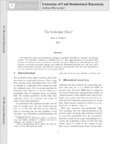 |
Rogers, Alan R. | The molecular clock | The molecular clock uses evolutionary changes in proteins and DNA to measure the passage of time. Yet molecular evolution is clocklike only to a first approximation. Uncertainties arise because of variation in rates of molecular evolution, because of difficulty in calibrating clocks, and because we ... | | 2013-01-01 |
| 66 |
 |
McElreath, Richard | New methods in quantitative ethnography: economic experiments and variation in the price of equality | A new method for quantitatively documenting concerns for economic fairness has the potential for identifying variation in prosociality within and across societies. Multiple dictator games conducted in two small-scale societies presented decision makers with a choice between an equitable and an ine... | Inequality; Payoffs; Prosociality | 2007-12 |
| 67 |
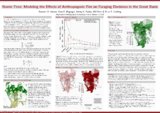 |
Vernon, Kenneth B. | Numic fires: modeling the effects of anthropogenic fire on foraging decisions in the Great Basin | Across Western North America, hunter-gatherers modified their surrounding environment with the application of fire (1; 11; 15). However, to date we lack a general theoretical framework to investigate the reasons why people would burn or its effects on traditional foraging economies. To begin to fill... | Behavioral ecology; Diet; Fire | 2015 |
| 68 |
 |
Wiessner, Pauline W. | On emergency decisions, egalitarianism, and group selection | Boehm (CA 37:763-93) puts forward an important thesis-that with the evolution of egalitarian societies, privileged routes to reproductive advantage are blocked and the power of individua selection severely compromised. With competition so constrained, altruistic behavior can more readily spread i... | Boehm's mode; Evolution of altruistic behavior | 1998-06 |
| 69 |
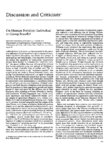 |
Hawkes, Kristen | On Human fertility: Individual or group benefit? | Caldwell et al. (CA 28:25-43) have pointed to the pervasive influence of Carr-Saunders's (1922) concept of population regulation throughout two-thirds of a century of anthropology and demography. | | 1988-01-01 |
| 70 |
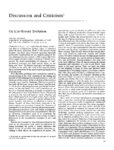 |
Hawkes, Kristen | On life history evolution (a comment on Chisholm) | Chisholm (CA 34:I-24) is right that the theory, models, and data of evolutionary biology apply to questions asked by social scientists. Work in life-history theory (Stearns 1992, Roff 1992, Charnov 1993) has especially provocative implications for the understanding of human development (see review i... | | 1994-01-01 |
| 71 |
 |
Wiessner, Pauline W. | On network analysis: the potential for understanding (and misunderstanding) !Kung Hxaro | Schweizer's social network analysis (CA 38: 739-52) of gift giving among the !Kung San (Ju/'hoansi) demonstrates most elegantly how individual strategies, guided by basic cultural rules, coalesce to form a regional system. Complex connections in the network that defied description with simpler anayt... | Density of kinship; Nonsymmetry; Ethnohistorica | 1998-08 |
| 72 |
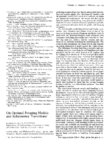 |
Hawkes, Kristen | On optimal foraging models and subsistence transitions | Layton, Foley, and Williams are right: "progress" doesn't explain transitions from hunting and gathering to agriculture, by theory and models from behavioral ecology might. | | 1992-01-01 |
| 73 |
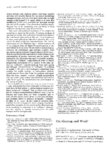 |
Hawkes, Kristen | On sharing and work (a comment on Bird-David) | Bird-David (CA 33:25-47) discusses reasons for the persistent vitality and wide appeal of Sahlins's influential characterization of hunter-gatherers as representatives of 'original affluence." | | 1992-01-01 |
| 74 |
 |
Cashdan, Elizabeth A. | On territoriality in hunter-gatherers | Cashdan's intention of using an evolutionary framework to examine cross-cultural variations in territorial defense is admirable, but her argument about the applicability of available models, her own model, and the data used to support it (CA 24:47-66) are all severely flawed. Specifically, Cashdan ... | Defense; Organisms; Behavior | 1983 |
| 75 |
 |
Hawkes, Kristen | On why male foragers hunt and share food: Reply to Hill and Kaplan | My argument is this: Some food resources, notably large animals when they are unpredictably acquired, are too expensive to defend. Other can claim shares of them without repaying shares of the same foods later. | | 1993-01-01 |

























